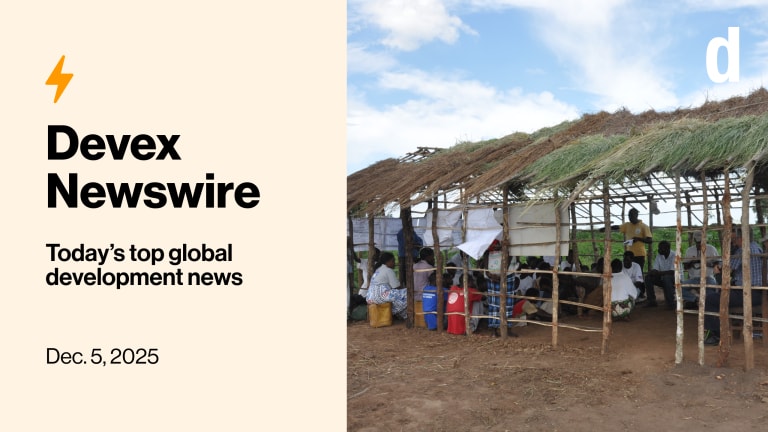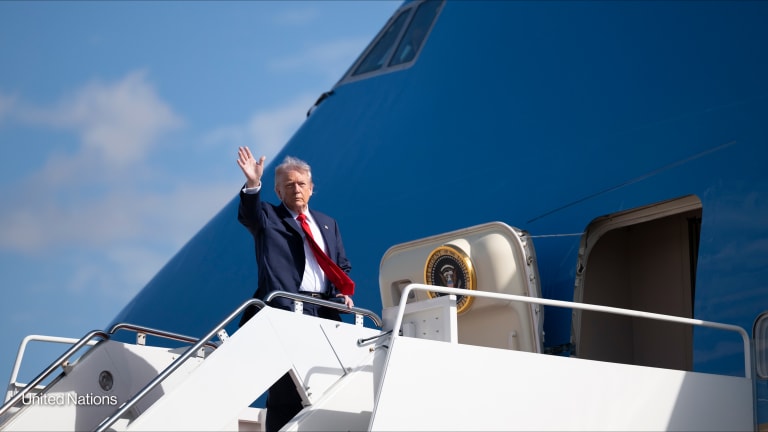
BARCELONA — Since 2014, eastern Ukraine’s Donetsk and Luhansk regions have been the backdrop to a struggle between Russian-backed separatist forces and the Ukrainian military — a conflict that has killed more than 3,000 civilians.
“There will need to be millions and billions invested in these water supply systems by the international community with the Ukrainian government.”
— William Corkill, water and habitat coordinator, ICRCAt 280 miles long, the front line intersects with the regions’ main water supply: the Donets River and Yuzhnodonbasskyi pipeline. Water pipe breakages due to shelling and an inability to replace aging pipes mean that shortages and water rationing are common.
More on ICRC:
► Q&A: Incoming ICRC chief on the new humanitarian challenges
► Q&A: ICRC chief on why international NGOs 'are at extreme risk'
“When we talk about government-controlled territories and non-government-controlled territories, they're actually shooting at each other across the line of contact, meaning across the bridge, canal, and water pipes,” said William Corkill, water and habitat coordinator at the International Committee of the Red Cross.
Corkill called on development organizations to begin formulating a medium-term investment plan for supplying water in the region and to be ready to act once peace comes. “There will need to be millions and billions invested in these water supply systems by the international community with the Ukrainian government,” he said.
Speaking to Devex, Corkill described how water access is being jeopardized in eastern Ukraine, what ICRC is doing to help, and the role development organizations can play.
This conversation has been edited for length and clarity.
What is the situation like in terms of water access in eastern Ukraine?
For all the water supply companies in this area, their income doesn't cover their expenditure [because the conflict has reduced income whilst raising costs], so they are in quite large debt.
Major transmission pipelines also crisscross the line of contact. In Donetsk, the water goes into the non-government-controlled area, out of the non-government-controlled area, back into the non-government-controlled area, so, effectively, major pipelines crisscross the line. Now, obviously there have been breakages, some of which have not been repaired yet, as they cross the line of contact.
So basically we've got three main problems: Income doesn't meet expenditure, the problems of working across the line of contact, the age of the infrastructure and the conflict damage.
How common are water shortages? Is there any data on how many people go without water?
There is no comprehensive data that I am aware of, though the water supply websites and media show a rationing schedule and report when there are or will be cuts to water supply. … Due to the aged condition of the assets and conflict damage, there are frequent breaks in pipelines and failure of pumps, which results in water supplies being cut for short periods of time — a day or a few days — while repairs are made. ...
There are two significant towns, Krasnohorivka and Marinka — government-controlled areas — that have had no supply of treated water. They have received “technical” water — untreated — since 2015. The pipelines supplying these towns were heavily damaged by the initial phase of the conflict, and the repair required is not possible while the conflict goes on.
Is this a priority for the local government or anyone else?
Yes, it is a priority. The government has supported, for example, [the water company] Voda Donbassa by paying off some of their electrical debts and [providing] quite a large amount of money. So in that way, they are being supportive. … [But] they could be more involved.
There is difficulty with both sides of the line of contact because they have less interest in supporting water supply to the other side of the line of contact. As a neutral organization, we're trying to bring in what we can to help the system work so that 4 million people can somehow have access to water. Recently, the government has been more interested in funding major projects rather than [just] day-to-day operation and maintenance and repair works. ... Obviously, the conflict was a shock to the government, and it's taken time for them to recover.
What are the main activities that ICRC runs?
Water supply companies outline what they require; we purchase the item and monitor installation with pipes. Obviously, there are certain pipelines where they lose a lot of water due to breakages, which we prioritize. ... Usually, the water supply company does the work, or sometimes they will hire a contractor, so then we're looking at how much water is being lost and how [many] breaks per kilometer they get in a year, because the more breaks they get, the worse condition the pipes are in and the more they're going to lose.
We supply water-treatment chemicals, ... operation and maintenance equipment, repair equipment, and tanks. … We provide technical advice, basically, to prioritize pipe and pump replacement, and we have provided IT equipment to improve the management of the networks.
We also try and facilitate the repair of pipes along the line of contact, and we try and persuade that party or military not to shell water infrastructure along the line of contact, though it still happens.
Update, Feb. 5, 2020: The article has been updated to clarify that the conflict between Russian-backed separatist forces and the Ukrainian military has killed over 3,000 civilians.








